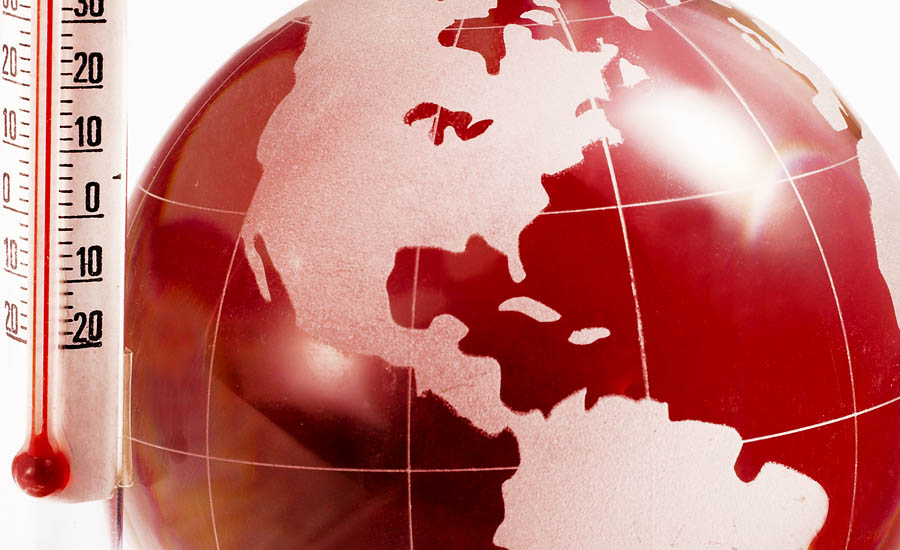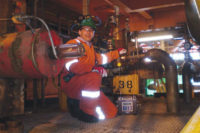Turning climate change into opportunity
Science strives to find solutions

We’ve heard plenty about the factories, automobiles and other things that produce greenhouse gas and contribute to climate change, but how about a new kind of plastic that is made from greenhouse gas?
The lab that developed that innovative plastic is one of the science pioneers being recognized by the EPA, in its 2016 Presidential Green Chemistry Challenge Awards. The awards are dedicated to researchers and developers who turn climate risk and other environmental problems into business opportunities, spurring innovation and economic development.
“From academia to business, we congratulate those who bring innovative solutions that will help solve some of the most critical environmental problems,” said Jim Jones, EPA’s assistant administrator for chemical safety and pollution prevention. “These innovations reduce the use of energy, hazardous chemicals and water, while cutting manufacturing costs and sparking investments. They even turn pollution into useful products.”
The honorees who will be recognized at a ceremony in Portland, Ore. on June 13:
- Professor Paul Chirik of Princeton University is being recognized for discovering a new class of catalysts that are used to produce silicones, found in silicone rubber, tires, shampoos, furniture fibers and paper coatings without using hard-to-obtain platinum. This could reduce the mining of ore which reduces costs, greenhouse gas emissions and waste. This technology could cut energy usage by 85 billion BTUs/year, waste generation by 8.5 million kg/year and carbon generation by 21.7 million kg/year.
- Verdezyne of Carlsbad, Calif. is being recognized for developing a yeast that produces a chemical used to make high performance nylon 6,12 for hairbrushes toothbrushes, adhesives, coatings, fragrances, and automotive and aviation oils. In addition to using a plant-based feedstock and having lower greenhouse gas emissions, this process is also safer because it does not use high temperatures or concentrated nitric acid. The product has qualified for the USDA Certified Biobased label.
- Newlight Technologies of Costa Mesa, Calif. is being recognized for developing a plastic made from methane-based greenhouse gas. It is now used to make bags, cell phone cases, containers, furniture and other products, and has been adopted by Dell, Hewlett Packard, KI, Sprint, Virgin, the Body Shop and other companies. This plastic is net carbon negative. It is less expensive and has equal or greater performance than traditional petroleum-based plastic products. It is commercially successful, with contracts for almost 30 billion pounds of product and a 50 million pounds per year expansion plant that is already sold out.
- CB&I, The Woodlands, Texas and Albemarle are being recognized for developing and commercializing safer technology to produce alkylate, a clean gasoline component produced at about 30 billion gallons per year, 60% of which is produced in North America. CB&I, Albemarle, and Neste have replaced the traditional toxic and corrosive liquid acid catalysts with safer technology that has a lower environmental impact.
- Dow AgroSciences, LLC of Indianapolis, Ind. is being recognized for developing and commercializing Instinct®, an additive that reduces fertilizer nitrate leaching ground and surface waters. It also reduces atmospheric nitrous oxide emissions. Nutrient pollution is one of America’s most widespread, costly and challenging environmental problems. Reducing nutrient run-off from agricultural operations is a high priority for EPA. Retaining applied nitrogen longer in the plants’ root zones is optimal for crop utilization and yield, and for reducing run-off. In 2014 alone, the Dow AgroSciences technology added about 50 million bushels of additional corn - equating to about $205,500,000 additional production revenue for U.S. corn growers - and reduced carbon dioxide emissions by about 664,000 metric tons.
During the 21 years of the program, EPA has received more than 1600 nominations and presented awards for 109 technologies. Winning technologies are responsible for annually reducing the use or generation of more than 826 million pounds of hazardous chemicals, saving 21 billion gallons of water, and eliminating 7.8 billion pounds of carbon dioxide equivalent releases into the air.
An independent panel of technical experts convened by the American Chemical Society Green Chemistry Institute formally judged the 2016 submissions from among scores of nominated technologies and made recommendations to EPA for the 2016 winners. The 2016 awards event will be held in conjunction with the 20th Annual Green Chemistry and Engineering Conference.
More information: www.epa.gov/greenchemistry.
Looking for a reprint of this article?
From high-res PDFs to custom plaques, order your copy today!






